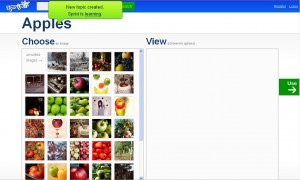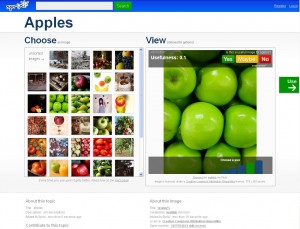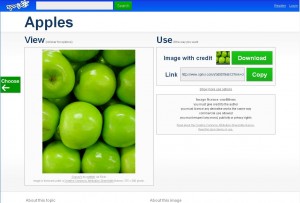It’s trite, but it’s true – the best products to build are those that people want. Sage words from Paul Graham, yet I’m always surprised at how many products out there are solutions looking for problems. That’s why I was particularly pleased to see my good friend Andrew Goldstiver’s new startup, Sprixi — a site for finding useful images.
But what are “useful” images? First let’s consider the state of image search currently. Firstly, good image search matters a lot to people, as made clear by the positive reception of Bing image search after years of Google image search languishing. But what are the common use cases for image search? Trying to show someone something you don’t have a picture of (“Here Steve, this is what a Huntsman spider looks like in Australia”)? Trying to confirm what something looks like (“Ahh, so that’s what a Darwin stubby is”)? Looking for something to use for a blog post or an assignment (“Where do I find a picture of a periodontal probe“)?
It’s the last use case that’s always been frustrating. While writing my thesis I remember emailing dozens of people for permission to use their images. Then there’s the size issues – most images online are thumbnails, with few print quality images – without using filters these are difficult to surface. Finally, there’s relevance — finding the best image can be a chore.
So how to solve that? Sprixi does this a few different ways:
1. Great interface. Much slicker to use than other image search engines.
2. Fair-use image crawling. Sprixi aggregates all the best sources of images which can be re-used.
3. User contributed content. Users can upload their own images.
4. Crowd-sourced relevance. While images have a built-in relevance, Sprixi allows users to score photos so that the most representative photo floats to the top of the list.
5. Web 3.0 – like many new sites, Sprixi is part of the semantic web, by having an understanding of different concepts (also see Adioso and Trovix for other examples).
As an example, let’s say I’m doing a presentation on user research, perhaps the ethnographic dental studies I completed for my thesis. If I need a generic picture of a dentist to illustrate a slide, I simply search for “dentist” on Sprixi. There’s an existing topic with sorted and unsorted images. I can then browse through the photos, rate them myself, and when I find one I like, I choose the size and click the “use” button (which is some very innovative use of horizontal real-estate for those of us on small screens), giving me the option to download or embed a link. If Sprixi doesn’t understand the topic you’re search for it will create a pool of photos based on aggregation on the fly.
As a later engaged member of the community, I could also upload a copy of any photos of dentists I took as part of my studies for other people to use. I could then populate a new concept, such as “participatory design” with some shots of researchers interacting with practitioners. Now suddenly there is a site which has useful pictures of the participatory design process. Trying this search on Google, Bing and Flickr revealed reasonable results, but with lots of cruft. Sprixi wants to get rid of the cruft. According to Andrew, it’s not explicitly necessary to rate images manually either, as Sprixi does some implicit rating through site interaction.
I was a little disappointed that Sprixi didn’t pick up on more obscure topics (e.g. periodontal probes) with its aggregation, but I’m sure this will continue to improve. Managing contributions (and the sign-up process in general) seems to be a work in progress.
I do wonder how big the user base for a product like this will be — however there are an awful lot of bloggers, uni students and Powerpoint presentation creators out there. I am still interested to see how Sprixi plans to monetize and grow beyond the few sites its crawling at the moment. If it gets traction though it could easily become a fantastic repository for free-use images.
Give Sprixi a try and let Andrew know what you think.



